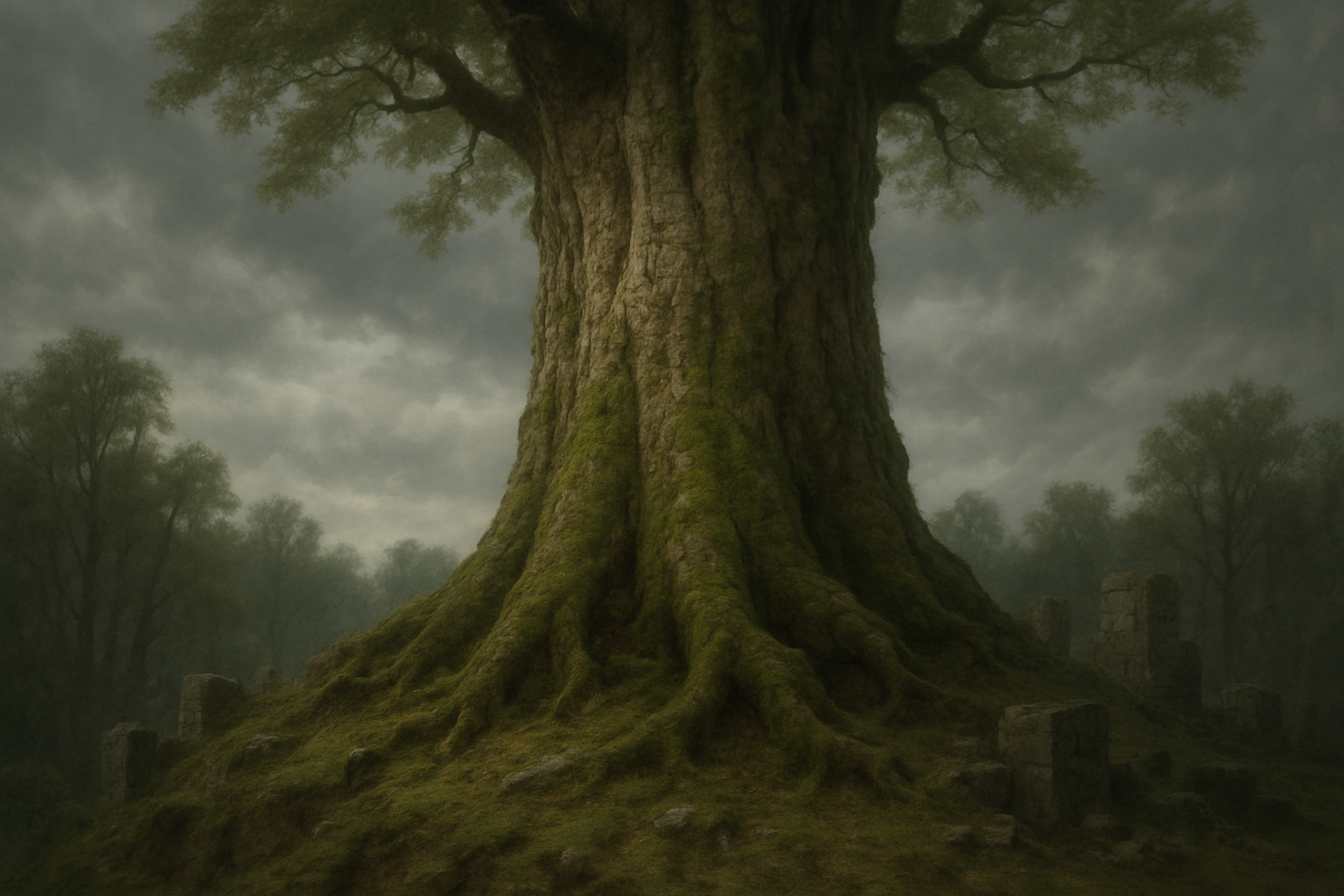
The watchers don’t leave – they endure.
The Watchers: Trees That Have Stood Through Empires and Eras
There are trees whose roots reach deeper than memory, deeper than the bones of fallen kings or the cracked marble of long-forgotten cities. They rise from the earth like quiet sentinels, wrapped in the silence of centuries, bearing witness to the world’s breathless churn. These are the watchers – ancient trees that have seen history unfold not in pages, but in the shifting winds and footprints of those who passed beneath their shade.
Imagine standing beneath an olive tree in the hills of Greece, its twisted limbs grown gnarled from thousands of seasons. The same tree that shaded philosophers now leans toward the sunrise, leaves whispering names that have long since faded from stone. Or picture the great bristlecone pines in North America, whose wooden hearts are older than most civilizations, older even than writing. In their silence, they are storytellers of another kind – ones who record through rings and resin rather than ink.
These trees do not speak with voices, but they speak all the same. In the hush of late afternoon, when the light drips gold down bark and branch, you might feel their gaze. Not watching like a person, but more like time itself – observing, holding, remembering. The forest is not just alive. It is aware.
There are stories of yews planted beside cathedrals older than the roof above them, trees that have survived fires, floods, wars, and the slow creep of stone into soil. In Japan, the sacred camphor trees near shrines stretch toward the heavens, hollow in parts from lightning but still pulsing with green. In India, banyans grow like walking cathedrals – roots dripping from sky to earth as if time itself is trying to anchor down.
We often think of history as something made by people, but the trees know better. Empires are brief flickers compared to a trunk grown patiently over 1,000 years. These arboreal witnesses do not choose sides. They watch kings crowned and dethroned. They watch cities rise in celebration and crumble into dust. Where we forget, they remember.
Their bark holds the fingerprint of rain centuries old. Their roots have heard the laughter of barefoot children long buried, the hymns of monks under stars that no longer shine in the same place. There is a power in that sort of presence – a deep, grounded kind of wisdom that does not need to move to understand.
Some trees were once used as meeting places, where tribes settled disputes beneath oak limbs. Others were execution sites or sacred altars, their bark stained by ritual and sorrow alike. In these ways, trees have absorbed not only the natural but the human: our emotions, our ceremonies, our mistakes. They carry our echoes.
In a fast-moving world obsessed with the next thing, it is comforting, even humbling, to remember that some things still stand still. Not stuck – but steady. Not passive – but purposeful. The watchers remain not because they resist time, but because they have learned how to befriend it.
Next time you walk through an old forest, listen. Let the hush stretch. Let the air settle into your lungs like soft moss. That stillness isn’t emptiness – it’s presence. It’s a long-held breath shared between tree and traveler, a silent agreement that while the world may rush, here, beneath these branches, you are standing with time itself.
And perhaps, if you listen with more than your ears, you’ll feel the gentle nod of a branch older than belief, welcoming you into the quiet fold of its memory.
Did You Know?
![]()
- The world’s oldest living tree is over 4,800 years old. A Great Basin bristlecone pine named Methuselah grows in California’s White Mountains and is older than the Pyramids of Giza.
![]()
- Yew trees can regenerate from the inside. Even if hollowed out, they can continue growing for centuries by rerouting nutrients through new shoots within the trunk.
![]()
- The Major Oak in England’s Sherwood Forest is said to have sheltered Robin Hood. Estimated at over 1,000 years old, it’s a symbol of folklore, rebellion, and woodland strength.
FAQs About Talking Trees
Can trees really “witness” history?
While not conscious in the human sense, trees are living records of time. Their rings hold environmental data, their presence marks cultural and historical significance, and they often become woven into local myth and memory.
Are there trees still standing today that were around in ancient times?
Yes. Bristlecone pines, yew trees, and olive trees—some over 2,000 years old—are still alive today, making them some of the oldest living organisms on Earth.
Why do people consider old trees sacred or wise?
Ancient trees evoke awe through their size, age, and endurance. Many cultures view them as bridges between the physical and spiritual worlds, or as guardians of memory and continuity.
Have questions about the trees in your own yard?
Tip Top Arborists is here to help you care for your living legends. Let our certified arborists provide expert guidance for a lifetime of healthy trees.
